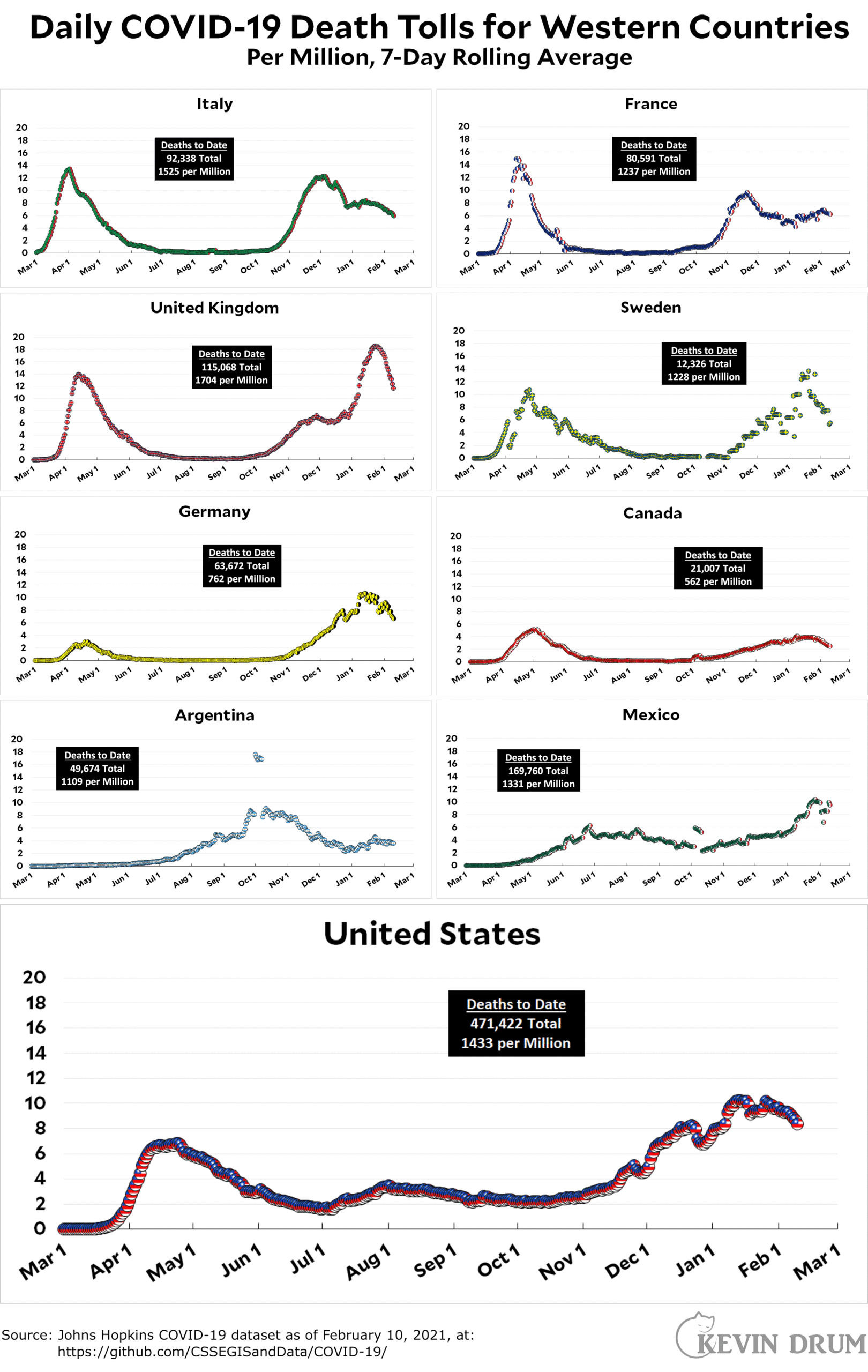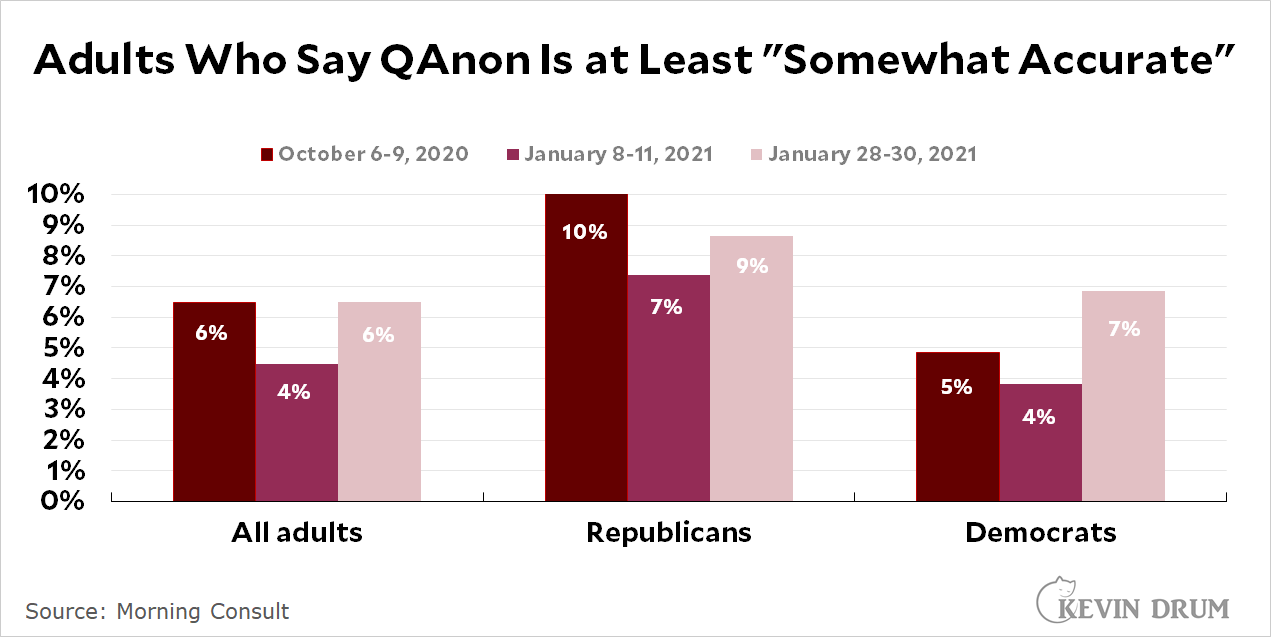Fed chair Jerome Powell gave a speech yesterday that was mostly music to liberal ears. Powell said there was lots of room to push the unemployment rate down further than we used to think, and because of that the Fed won't put the brakes on the economy unless inflation clocks in well above 2 percent for an extended period of time. In other words, he thinks we should let the economy run hot for a while.
Powell also warned that the labor force participation rate had been declining, which is true. But he also said this:
Also concerning was that much of the decline in participation up to that point had been concentrated in the population without a college degree. At the time, many forecasters worried that globalization and technological change might have permanently reduced job opportunities for these individuals, and that, as a result, there might be limited scope for participation to recover.
Fortunately, the participation rate after 2015 consistently outperformed expectations, and by the beginning of 2020, the prime-age participation rate had fully reversed its decline from the 2008-to-2015 period. Moreover, gains in participation were concentrated among people without a college degree.
I don't get this. First off, here's the basic labor force participation rate for people with only a high school diploma:

Just as Powell said, it's been on a downward trend for several decades. It's also true that during the 2010-2015 period it declined a little bit more than the LFPR for college grads. Fine. But Powell went on to say that the LFPR for high school grads rebounded in the 2015-2019 period, so let's zoom in on that:

I see no gains here at all. It's close to flat for both men and women. Here it is for people with less than a high school diploma:

Once again, almost dead flat.
What gives? If you haul out your microscope you can just barely make out tiny gains during the 2015-2019 period, but certainly nowhere near enough to draw any conclusions from. So why does Powell think there's something here that suggests blue-collar workers were being pulled in from the sidelines during the late stages of the Obama recovery? What am I missing?
(It's worth noting that Powell used the age 25-54 workforce while I'm using the age 25+ workforce. This is because the BLS does not make the 25-54 numbers available to mere mortals like me. Powell, conversely, has a staff of statisticians who can give him whatever he wants at the touch of button. It's possible that this is the source of our disagreement, since his figures don't include retirements and mine do. I don't think that should make a huge difference, especially when you're comparing one time period to another, but you never know.)
POSTSCRIPT: Just as an aside, you might be interested in a long-term look at how high school dropouts have fared in the workforce:

There's a bit of an uptick during the late '90s, but it's been flat since then. For the past two decades, through recessions and recoveries, exactly the same share of the high school dropout workforce has been employed.



 Future studies will undoubtedly find that in places where Fox News is more widely available, more people also believed that the 2020 election had been stolen.
Future studies will undoubtedly find that in places where Fox News is more widely available, more people also believed that the 2020 election had been stolen. 
 When people read about this stuff, the chart is all that a lot of them are going to see. They won't read the accompanying text at all, let alone read it carefully. They'll just take a quick glance and come away thinking that Americans are nuts.
When people read about this stuff, the chart is all that a lot of them are going to see. They won't read the accompanying text at all, let alone read it carefully. They'll just take a quick glance and come away thinking that Americans are nuts.
